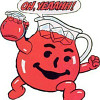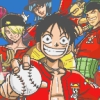Grand Theft Auto: Chinatown Wars (DS) review"Nearly everything you use the stylus for in Chinatown Wars – rummaging through trash, diffusing bombs, assembling weapons – sounds like a gimmick on its own. It’s the collaboration of all of these individual elements that makes Chinatown Wars work. As you explore this retooled Liberty City, you’ll notice that Rockstar Leeds poured detail into every facet of the design, fleshing out areas that most developers would simply shrug off. Obtaining Molotov cocktails, for example, is no longer simply a matter of picking them up off a designated location on the streets. You’ve literally got to find a gas station and play a mini-game in which you must “aim” the nozzle in response to the fluctuating flow of the gasoline, so as to get as many cocktails for your money’s worth as possible. It’s a wonderful way to make the most of the DS hardware." |
The first time you attempt to steal a parked car in Grand Theft Auto: Chinatown Wars and are prompted with a seemingly obligatory hotwiring mini-game on the touch screen, you think, “Oh boy. Here we go again.” I’m a firm believer that DS developers should either incorporate the touch screen as a vital, central aspect of the game design or ignore it altogether; awkwardly shoehorning stylus-based mechanics into gameplay that doesn’t need it just for the sake of taking advantage of the hardware just works to make the experience less intuitive as a result. At first glance, Chinatown Wars seems to be falling into that habit. It’s only during the hours upon hours of game time that follow that you come to appreciate Rockstar Leeds’ genuine commitment to making Chinatown Wars an experience that could only happen on DS.
Nearly everything you use the stylus for in Chinatown Wars – rummaging through trash, diffusing bombs, assembling weapons – sounds like a gimmick on its own. It’s the collaboration of all of these individual elements that makes Chinatown Wars work. As you explore this retooled Liberty City, you’ll notice that Rockstar Leeds poured detail into every facet of the design, fleshing out areas that most developers would simply shrug off. Obtaining Molotov cocktails, for example, is no longer simply a matter of picking them up off a designated location on the streets. You’ve literally got to find a gas station and play a mini-game in which you must “aim” the nozzle in response to the fluctuating flow of the gasoline, so as to get as many cocktails for your money’s worth as possible. It’s a wonderful way to make the most of the DS hardware.
But while making Chinatown Wars a largely DS-centric experience is a feat in and of itself, the fact that Rockstar was able to reproduce the full GTA experience on Nintendo’s technologically inferior handheld is the real accomplishment. Blending an old-school bird’s eye perspective with a fully rendered recreation of the Liberty City seen in GTA IV is the perfect compromise, as it greatly expands upon the mechanics seen in the original 2D games without overshooting (as I felt the PSP iterations did).
In rebuilding the newest version of Liberty City, some sacrifices were made – the island of Alderney has been removed completely, and the terrain is much flatter to more aptly suit the new camera angle – but for the most part, the layout of Chinatown Wars’ sandbox world is familiar enough that series vets will recognize key landmarks in a flash: There’s Francis International Airport on the east side of Dukes! There’s the Statue of Happiness in the southwest corner! And that’s Middle Park at the center of the map! This Liberty City is inhabited by squat, cartoonish-looking character models that seem to complement the comic book panels that have long been the visual trademark of this series, as do the vaguely cel-shaded environments that unfold with few hiccups on the tiny DS screen.
As you’d imagine, the ever-present radar has been placed on the bottom screen, and if anything, Chinatown Wars is perhaps a bit too reliant on the GPS system, which paints an exact path for the player to take to each location and, in my mind, limits exploration. Then again, the only reason I’m saying this is because Liberty City is a sandbox world that I want to explore, and to rediscover. The city is painted with exquisite detail, and it’s amazing how few compromises were made in rebuilding the familiar environment on the DS. The plot, centered around a Chinese fellow named Huang Lee who travels to America to investigate his father’s death, is the only unexpected victim. That the cutscenes play out entirely as illustrated stills is understandable, but it’s a shame that the script had to be so shallow, and that the game had to revolve around such an unlikeable protagonist.
Of course, combat was also one of the major areas to receive a downgrade in the conversion. GTA IV brought a Gears of War-style cover mechanic onto the scene, which totally changed the face of gunplay in the GTA world forever. Chinatown Wars predictably reverts back to the dodgy targeting system of the old days, and it’s simply not the same. While the lock-on system does a relatively good job of predicting what exactly you want to be aiming at, there’s an element of randomness to it and, on the whole, it’s not a very reliable system.
But whereas Rockstar capitalized on the infinitely smoother gunplay mechanics in GTA IV by placing a much higher emphasis on direct combat, their solution in Chinatown Wars is to experiment more with mission design, and it works. There’s this excellent “throwing” mechanic that’s been incorporated, in which items like grenades and Molotov cocktails are put to use with a slinging motion on the touch screen. One of the simplest (but most noteworthy) examples of this is when Huang finds himself positioned on the truck of a rival dealer, throwing crates of drugs to his boss’s vehicle directly behind him. While there are still a fair amount of gunfights, most of the story missions (of which there are many) either make innovative use of the stylus or put a creative spin on seemingly tired GTA fare. When a street race was mentioned, I groaned, assuming I’d be competing in another clumsy checkpoint-based race, but no: my job was to make sure my boss won by keeping the other competitors out of his way. Ingenious. (And as a bonus, Chinatown Wars offers the long-overdue ability to replay your favorite missions.)
It should be said that the driving feels as natural as you’d want it to be, with each car handling differently and responding realistically to its surroundings thanks to an excellent physics engine – and surprisingly, the camera gives you plenty of breathing room. Rockstar, once again capitalizing on the elements that work, tied this into your wanted level. Whenever you attract the attention of the cops, simply running away won’t do it: You’ve literally got to force them into crashing their cars, which adds a more aggressive spin to an aspect of GTA that has, for the longest time, been a matter of fleeing. You’ll feel like a pint-sized Jason Bourne as you bolt through the busy streets of Algonquin whilst the cop cars pile up behind you.
Though there’s one addition to Chinatown Wars that easily steals the spotlight. The GTA series has always lovingly embraced nearly every illegal activity one can imagine, and this time around, it’s drug dealing that takes center stage. The jobs you receive are relatively low-paying, so in order to earn sufficient funds, Huang must tackle the drug market. It functions much as any economic management system would – you buy something, you sell it for more. But as you meet new dealers in the back alleys of Liberty City, you’ll get alerts via e-mail whenever a specified dealer has a cheap shipment, or is willing to pay big bucks for a certain type of drug. Ninety-five percent of the money I earned in Chinatown Wars, I earned in the drug market. It’s such an engrossing aspect of the game that it frequently distracted me from the story missions and ultimately prevented me from reaching the end as quickly as I’d planned.
And that’s saying something, given how beautifully executed Chinatown Wars is. I’ve read other reviews that say the new DS game is as good as any console iteration, which I think is kind of a stretch, given the understandably limited setting and a much more linear rate of progression. That said, nearly everything you’d want to see in a GTA game – the profanity, the rampages, the radio stations, the hidden goodies – can all be found in Chinatown Wars, with few compromises, and with the touch screen gimmicks adding an undeniable flair. It’s an astonishingly complete, authentic and relevant package, and despite its shortcomings, it’s hard to imagine the GTA experience being pulled off any better on the DS. I can’t wait to see where they take this series next.
 |  |  |  |  |
Freelance review by Mike Suskie (March 31, 2009)
Mike Suskie is a freelance writer who has contributed to GamesRadar and has a blog. He can usually be found on Twitter at @MikeSuskie. |
|
More Reviews by Mike Suskie [+]
|
|
If you enjoyed this Grand Theft Auto: Chinatown Wars review, you're encouraged to discuss it with the author and with other members of the site's community. If you don't already have an HonestGamers account, you can sign up for one in a snap. Thank you for reading!
User Help | Contact | Ethics | Sponsor Guide | Links










